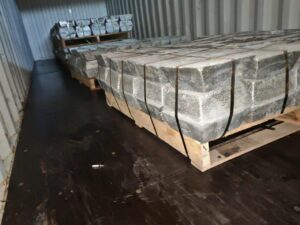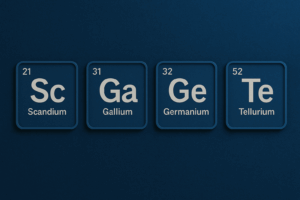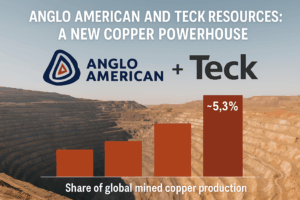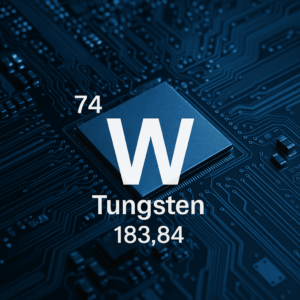With critical minerals becoming increasingly strategic, antimony has emerged as a key input in flame retardants, energy storage, semiconductors, and specialty alloys. But despite its rising relevance, the economics of producing antimony remain complicated—tightly bound to ore grade, process choice, and shifting global market dynamics. This article outlines the dominant smelting methods and attempts to quantify real-world production costs.
Given that refined antimony is currently trading at record levels of $58,000–60,000 per tonne, it might seem logical to assume that producers, traders, and suppliers are enjoying unprecedented profitability. But is that truly the case? We explore whether the current pricing is translating into strong margins or whether the costs and risks of production suggest a more fragile equilibrium. In doing so, we aim to provide a clearer understanding of how sustainable these high prices really are.
Smelting Methods for Antimony
Antimony is primarily extracted from stibnite (Sb 2S 3) ores. After concentration through flotation, smelting is employed to recover metallic antimony. There are two principal smelting methods:
1. Direct Reduction with Iron (Traditional Method)
This classical approach involves the reduction of stibnite concentrate with metallic iron:
Sb2S3+3Fe → 2Sb +3FeS
- Pros: Simple, widely used, no need for prior roasting
- Cons: Produces FeS slag, less control over emissions
- Reagents: Iron (450 kg/tonne Sb), fluxes (200 kg), fuel (600 kg)
2. Roasting Followed by Reduction (Modern Method)
Here, stibnite is first oxidized to antimony trioxide (Sb 2O3), which is then reduced with carbon:
Sb2S3+6O2 → 2Sb2O3 +3SO2 (roasting) Sb2O3 +3C → 2Sb+ 3CO (reduction)
- Pros: Higher purity, allows SO2 capture for sulfuric acid
- Cons: Requires two stages, more energy-intensive
- Reagents: Carbon (300–500 kg), fluxes, oxygen/air
Cost Breakdown: Producing 1 Tonne of Antimony Metal
Using 50% grade antimony ore and assuming 85–90% recovery, approximately 2.2 tonnes of ore are required per tonne of antimony metal. A detailed cost model using updated market prices is as follows:
| Item | Usage | Unit Cost (USD) | Total Cost (USD) |
|---|---|---|---|
| Antimony Concentrate (50%) | 2.2 tonnes | 15,950 | 35,090 |
| Iron/Carbon (reduction) | 450 kg | 0.30 | 135 |
| Fluxes | 200 kg | 0.10 | 20 |
| Fuel (coal/coke/oil) | 600 kg | 0.15 | 90 |
| Electricity (direct method) | 500 kWh | 0.10 | 50 |
| Electricity (modern electric) | 2000 kWh | 0.10 | 200 |
| Flotation reagents | ~93.5 kg | Various | ~55 |
| Water (flotation) | 12 m3 | 0.50 | 6 |
| Total Estimated Cost (Direct) | $35,446.00 | ||
| Total Estimated Cost (Modern Electric) | $35,596.00 |
This excludes labor, capital costs, environmental compliance, and logistics, which can raise total costs significantly. The difference in electricity usage between direct fuel-based and electric smelting methods also highlights potential for energy optimization and cost variance based on local energy prices and infrastructure. This analysis also fails to capture the relatively high fixed costs of a smelter and the subsequent economies of scales that might be achieved.
Additionally, the concentrate price is based on the FastMarkets MMTA Standard Grade Price. This trades at a significant premium to the Chinese price. So if one could procure Chinese feed, then the Antimony concentrate costs would come down to around $6,760/MT bringing production costs down to under $16,000/MT against a current Chinese ingot price of $26,000/MT (Source: SMM).
Global Smelting Landscape
The antimony supply chain is geographically concentrated, with a few dominant players:
China
- Historically the largest producer and smelter of antimony.
- Major facilities: Hunan Province (Huangshan, Lengshuijiang), with traditional and modern roasting reduction units.
- Controls significant reserves and processing capacity.
Tajikistan
- Home to Anzob and Isfara smelters.
- Increasingly important as China tightens environmental controls.
Russia
- Produces both concentrates and refined metal.
- Some smelters focus on by-product recovery from polymetallic ores.
Other Countries
- Bolivia and Myanmar produce concentrates.
- Oman, South Africa, and Australia have small or pilot-scale smelting capacity.
- Turkey: Have limited output of ingots from captive mines
- Kyrgystan: Kadamzhay Antimony Smelter which relies on feed from Takikistan and Russia. This smelter has has had several challenges, but is currently reopened and producing limited quantites.
- US Antimony: Producing since 1969, but limited quantites (±945-1000 tonnes of contained Antimony a year from 2017-2023). Currently seeking to expand production capacity to 300MT a month. Also expanding output at Mexican facility.
- Vietnam: Well known ingot producer- ore is mainly sourced from China, currently under special license agreements.
Market Pricing vs. Production Cost
- Refined antimony metal currently trades around $58,000–60,000/tonne.
- With ore prices at $15,950/tonne (50% grade) and processing costs exceeding $35,000/tonne, smelters can theoretically generate healthy margins — potentially in the range of $7,000–9,000 per tonne before other expenses.
- However, actual profitability depends on a range of variables including energy prices, reagent efficiency, labor, environmental compliance, and logistics.
- Producers with vertically integrated operations or long-term offtake agreements are better positioned to capitalize on current price dynamics, while standalone smelters face higher risk exposure to market volatility.
Conclusion
Antimony production is technically straightforward but economically nuanced. The choice of smelting route, ore grade, and reagent costs all heavily influence viability. With rising global demand and constrained supply, understanding these dynamics is essential for investors, policymakers, and industry players. As environmental standards tighten, modern smelting methods and sustainable sourcing will shape the future of this critical mineral.





